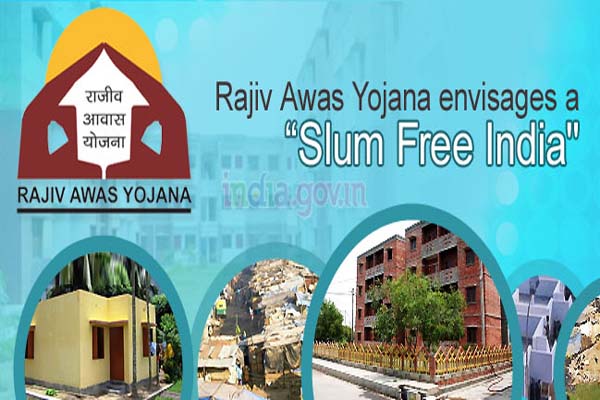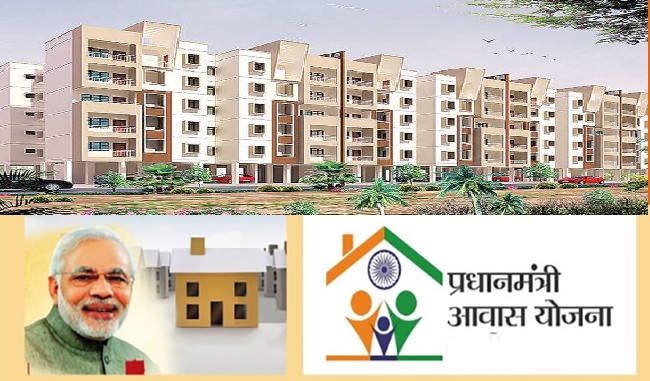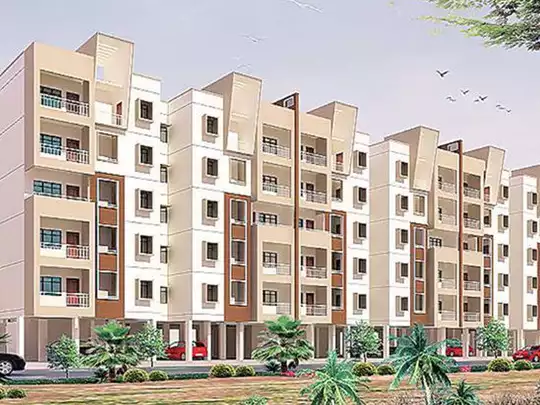Rajiv Awas Yojana: Transforming Urban Housing in India
Urbanization in India has been on the rise, leading to the rapid growth of cities and towns. With this growth comes the challenge of providing adequate housing for all citizens, especially those living in slums and informal settlements. In response to this challenge, the Government of India introduced the Rajiv Awas Yojana (RAY), a flagship scheme aimed at addressing the housing needs of the urban poor.
Objectives of Rajiv Awas Yojana
The primary objective of RAY is to promote sustainable and inclusive urban development by providing affordable housing to slum dwellers and low-income households. It seeks to achieve this by:
- Eliminating the proliferation of slums through slum rehabilitation and in-situ redevelopment.
- Promoting the construction of affordable housing units for the urban poor.
- Facilitating the provision of basic amenities and infrastructure in urban areas.

Implementation of RAY
RAY is implemented in phases, with each phase focusing on specific cities and towns identified by the government. The implementation involves collaboration between various stakeholders, including:
- Central and state government agencies
- Urban local bodies
- Non-governmental organizations
- Community-based organizations
Features of Rajiv Awas Yojana
RAY offers several features to address the diverse housing needs of urban residents, including:
- Slum rehabilitation: Under this component, slum dwellers are resettled in planned housing colonies with access to basic amenities such as water, sanitation, and electricity.
- Affordable housing: RAY facilitates the construction of affordable housing units through public-private partnerships, subsidies, and other financial incentives.
- In-situ redevelopment: In areas where slums cannot be relocated, RAY promotes the redevelopment of existing slums with improved infrastructure and housing facilities.
Benefits of Rajiv Awas Yojana
The implementation of RAY has led to several benefits for urban residents, including:
- Improved living conditions and quality of life for slum dwellers.
- Enhanced access to basic services such as water, sanitation, and healthcare.
- Reduction in homelessness and the proliferation of slums in urban areas.
Challenges and Criticisms
Despite its commendable objectives, RAY faces several challenges and criticisms, including:
- Inadequate funding and budgetary constraints.
- Delays in project implementation and bureaucratic hurdles.
- Limited participation of private sector players in affordable housing projects.
Success Stories and Case Studies
However, there have been instances of successful implementation of RAY projects, showcasing its potential impact on urban development. For example, the Dharavi Redevelopment Project in Mumbai has demonstrated how slum rehabilitation and in-situ redevelopment can transform urban landscapes and improve the lives of residents.
Impact of Rajiv Awas Yojana on Urban Development
The impact of the Rajiv Awas Yojana (RAY) on urban development has been substantial, especially in areas where the scheme has been implemented effectively. Here are some key aspects of its impact:
Improvement in Living Conditions: One of the most significant impacts of RAY is the improvement in the living conditions of urban residents, particularly those living in slums and informal settlements. By providing access to proper housing, basic amenities, and infrastructure, RAY has helped uplift the quality of life for thousands of families.
Reduction of Slum Proliferation: RAY aims to eliminate the proliferation of slums through various strategies, including slum rehabilitation and in-situ redevelopment. By providing alternative housing options and upgrading existing slums, the scheme has contributed to reducing the number of informal settlements in urban areas.
Enhanced Access to Basic Services: Through RAY, urban residents have gained better access to basic services such as water supply, sanitation, electricity, and healthcare. This has not only improved their standard of living but also enhanced their overall well-being and productivity.
Promotion of Inclusive Growth: RAY promotes inclusive growth by ensuring that all segments of society, especially the urban poor, have access to affordable housing and essential services. By addressing the needs of marginalized communities, the scheme fosters social inclusion and reduces inequalities in urban areas.
Creation of Livable Urban Habitats: RAY contributes to the creation of livable urban habitats by promoting the development of planned housing colonies and integrated urban infrastructure. This not only improves the aesthetics of urban areas but also enhances their sustainability and resilience to future challenges.
Stimulus to Economic Development: The implementation of RAY generates employment opportunities in the construction sector and related industries, thereby stimulating economic development in urban areas. Additionally, improved housing and infrastructure attract investment, further boosting economic growth and prosperity.
Empowerment of Urban Communities: By involving urban communities in the planning and implementation of RAY projects, the scheme empowers them to take ownership of their neighborhoods and participate in decision-making processes. This sense of empowerment fosters community cohesion and strengthens social capital in urban areas.
Overall, the impact of Rajiv Awas Yojana on urban development is multi-dimensional, encompassing improvements in housing, infrastructure, services, and socio-economic well-being. While challenges remain, particularly in terms of funding, governance, and coordination, RAY has undoubtedly made significant strides towards creating more inclusive, sustainable, and vibrant urban environments.
Comparison with Other Housing Schemes
Rajiv Awas Yojana (RAY) stands out from other housing schemes due to its specific focus on addressing the housing needs of the urban poor, particularly those living in slums and informal settlements. While schemes like the Pradhan Mantri Awas Yojana (PMAY) and Jawaharlal Nehru National Urban Renewal Mission (JNNURM) also aim to provide affordable housing, RAY differs in its approach and target beneficiaries.
PMAY, for instance, targets both rural and urban areas, whereas RAY primarily focuses on urban slums and informal settlements. Additionally, PMAY emphasizes the construction of new housing units, whereas RAY places equal emphasis on slum rehabilitation and in-situ redevelopment. This means that RAY not only seeks to provide housing but also aims to improve the living conditions of existing slum dwellers by upgrading infrastructure and amenities in situ.
Similarly, JNNURM primarily focuses on urban infrastructure development and governance reforms, with housing being just one component of its larger urban renewal agenda. While JNNURM has made significant contributions to urban development, RAY’s exclusive focus on housing for the urban poor sets it apart as a dedicated initiative to address the specific challenges faced by this vulnerable population.
Overall, while there may be overlaps in objectives between RAY and other housing schemes, RAY’s targeted approach and comprehensive strategies make it a unique and essential component of India’s efforts towards inclusive urban development.

Future Prospects and Sustainability
Looking towards the future, the Rajiv Awas Yojana (RAY) holds immense potential for sustainable urban development in India. However, ensuring its long-term success requires a strategic approach and concerted efforts from all stakeholders involved.
Effective Planning and Implementation
One of the key factors influencing the future prospects of RAY is the effectiveness of planning and implementation strategies. It is essential to align the objectives of the scheme with the evolving needs of urban residents and the changing dynamics of urbanization. This necessitates comprehensive urban planning that takes into account factors such as population growth, infrastructure requirements, and environmental sustainability.
Continued Investment in Affordable Housing
Sustainability in RAY hinges on continued investment in affordable housing initiatives. As urbanization accelerates and demand for housing increases, there is a need to scale up efforts to provide affordable housing options for low-income households. This requires collaboration between the government, private sector, and civil society organizations to mobilize resources and leverage innovative financing mechanisms.
Infrastructure Development and Service Delivery
Another aspect critical to the sustainability of RAY is the development of urban infrastructure and the delivery of essential services. Access to basic amenities such as water, sanitation, healthcare, and education is vital for enhancing the quality of life for urban residents. Therefore, investments in infrastructure development and service delivery must be prioritized to ensure the long-term viability of RAY projects.
Community Participation and Empowerment
Sustainability in RAY also depends on fostering community participation and empowerment. Engaging local communities in the planning, implementation, and monitoring of housing projects not only ensures their ownership but also enhances the effectiveness and sustainability of interventions. Empowering communities through capacity building, training, and livelihood support can create a sense of ownership and pride in their neighborhoods, contributing to the long-term success of RAY.
Incorporating Green and Resilient Urban Design
To address the challenges of climate change and environmental degradation, RAY should incorporate principles of green and resilient urban design. This includes promoting energy-efficient construction practices, sustainable water management systems, and green spaces within urban areas. By integrating environmental considerations into urban development planning, RAY can contribute to building more resilient and sustainable cities for future generations.
Monitoring and Evaluation Mechanisms
Lastly, establishing robust monitoring and evaluation mechanisms is essential for assessing the impact and effectiveness of RAY projects over time. Regular monitoring of project outcomes, performance indicators, and feedback from beneficiaries can help identify areas for improvement and course correction. By fostering a culture of accountability and transparency, these mechanisms can ensure that RAY remains responsive to the evolving needs of urban communities and continues to make a positive impact on urban development in India.

Conclusion
In conclusion, Rajiv Awas Yojana plays a crucial role in transforming urban housing in India by addressing the needs of the urban poor and promoting inclusive development. Despite challenges and criticisms, RAY has the potential to make a significant impact on urban landscapes and improve the lives of millions of residents.
Unique FAQs
Is Rajiv Awas Yojana only applicable to major cities?
- No, RAY targets both major cities and smaller towns identified by the government for urban development initiatives.
How can individuals benefit from Rajiv Awas Yojana?
- Individuals living in slums or informal settlements can benefit from RAY through access to affordable housing, basic amenities, and improved infrastructure.
What role do state governments play in implementing Rajiv Awas Yojana?
- State governments play a crucial role in implementing RAY by identifying project areas, providing land for development, and coordinating with central agencies and local bodies.
Are there any eligibility criteria for availing benefits under Rajiv Awas Yojana?
- Yes, eligibility criteria may vary depending on the specific components of RAY, such as slum rehabilitation or affordable housing schemes.
How does Rajiv Awas Yojana contribute to sustainable urban development?
- RAY contributes to sustainable urban development by promoting the creation of planned housing colonies, improving access to basic services, and reducing the proliferation of slums.
How can investors finance real estate investments?
Answer: Investors can finance real estate investments through various methods, including conventional mortgages, private loans, partnerships, and real estate crowdfunding platforms.
Are there any tax benefits associated with real estate investment?
Answer: Yes, real estate investors may be eligible for tax deductions on mortgage interest, property taxes, depreciation, and expenses related to property maintenance and improvement.
National Association for the Prevention of Starvation: An organization dedicated to addressing food insecurity and famine globally.
Network Access Point: In the realm of computer networking, it’s a major hub that connects Internet Service Providers (ISPs) and facilitates the exchange of data between them.
North American Power Symposium: A conference or gathering focusing on power systems and energy-related topics, often attended by professionals and researchers in the field.
Narcolepsy: A neurological disorder characterized by excessive daytime sleepiness and sudden attacks of sleep (narcoleptic episodes).
what is NAPS?
Answer: NAPS can refer to various things depending on the context:what is PMAY?
Answer: PMAY stands for Pradhan Mantri Awas Yojana, which is a flagship affordable housing scheme launched by the Government of India. The aim of PMAY is to provide affordable housing to all eligible beneficiaries by the year 2022. It targets economically weaker sections (EWS), low-income groups (LIG), and middle-income groups (MIG) in both urban and rural areas. PMAY offers financial assistance through credit-linked subsidies, beneficiary-led construction, and affordable housing projects to enable eligible individuals to own a house. The scheme also focuses on promoting sustainable and inclusive urban development by providing infrastructure facilities in housing colonies.


